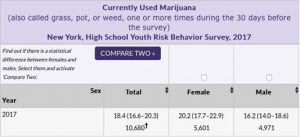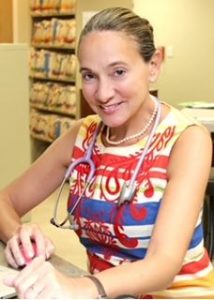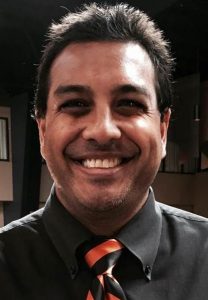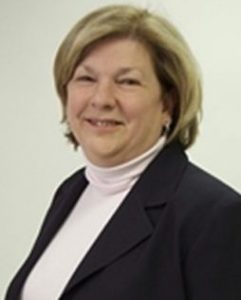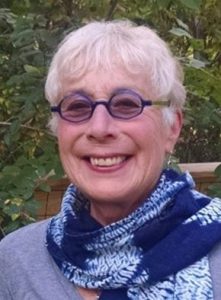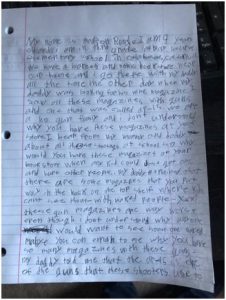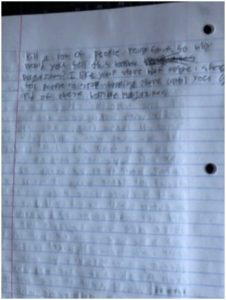(Dr. Robert Lee, DO, MS, FAAP is a pediatrician and Associate Pediatric Residency Program Director at NYU Winthrop Hospital. He is the Chair for the AAP Section on Osteopathic Pediatricians, Secretary for NYS AAP Chapter 2, and Co-Chair of the NYS AAP Chapter 2 Foster/Kinship Care Committee.)
“Reefer Madness” is a1936 film revolving around series of tragic events after innocent teenagers became addicted to marijuana. It was shown to parents as a cautionary tale about the scourge called marijuana.
Today, marijuana for recreational use is legal in 10 states, and more states are considering it. New York Gov. Andrew Cuomo has stated that the legalization of recreational marijuana is on his agenda for this year. 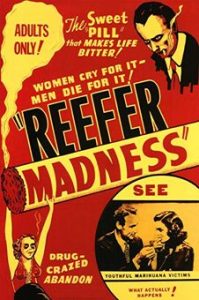
What is the position of the American Academy of Pediatrics on the issue of marijuana legalization?
The legalization of marijuana has raised critical questions for pediatricians who care for children and adolescents. In the 2015 policy statement, “The Impact of Marijuana Policies on Youth: Clinical, Research, and Legal Update,” the American Academy of Pediatrics opposes the legalization of recreational marijuana because of the potential harm to children and adolescents. Legalization would create an industry to commercialize and market marijuana, which would be harmful for children. Legalization would also lead to more adult use and likely lead to more adolescent use, despite attempts to restrict sales to underage youth. It true that we do not have all the data documenting changes to child health from the legalization of marijuana in the states of Washington, Colorado and California. Remember that it took generations, millions of lives and billions of dollar to establish the harms of combustible tobacco. We should not consider marijuana “innocent until proven guilty,” given what already know about the harms to adolescents.
Health Effects of Marijuana
Marijuana use in pediatric populations remains an ongoing concern, and marijuana use has known medical, psychological, and cognitive side effects. Short- and long-term recreational use in adolescents can cause:
- Impaired memory and decreased concentrations, attention span, and problem solving
- Alternations in motor control, coordination, judgement, reaction time and tracking ability
- Negative health effects on lung function
- Higher rates of psychosis is patients with predisposition to schizophrenia
- Higher likelihood of drug dependence
- Lower odds of completing high school or obtaining a degree
- Increase in use of other illicit drugs
- Increase in suicide attempts
What is the position statement of NYS American Academy of Pediatrics on New York State’s initiative to legalize marijuana for adult recreational use?
Pediatricians have special expertise in the care of children and adolescents. Parents and legislators may call on us for expert advice. NYS American Academy of Pediatrics has issued a position statement that is being shared with legislators, key Executive and State Agency staff and external partners.
NYS American Academy of Pediatrics strongly recommends that legislation include:
- Minimum age of sale should be at least 21 years of age
- Regulations to prevent underage sale should include at a minimum those protection in place for the sale of alcohol and tobacco to minors. Effective enforcement procedures are critical
- Strong regulation of retailers to prevent store locations near areas children frequent, such as parks and schools
NYS AAP recommend protections in place that include:
- Regulation by the NYS Department of Health to regulate potency
- Child proof packing of all products
- Outlawing of any products with appeal to children (i.e. candy)
- Labeling of product concerning the health risks to children
- Strict restriction on marketing that targets youth (i.e. use of cartoon characters)
- Including marijuana smoking in any clean indoor air legislation
- Prohibiting combustible marijuana in multi-unit housing
- Outlawing use of combustible marijuana in all public spaces where children may be exposed to second hand smoke
New York is likely to join the other 10 states that have legalized recreational marijuana, but as pediatricians, we need to advise legislators about the potential impact on children and adolescents. More than 18% of NYS high schools currently use marijuana. This number is going to increase once legalization has occurred.
Information for Parents
Marijuana: What Parents Need to Know
Legalizing Marijuana Not Good for Kids: AAP Policy Explained


